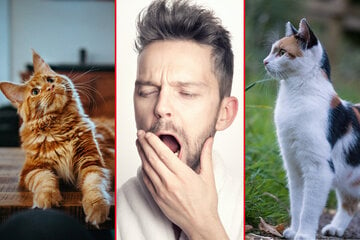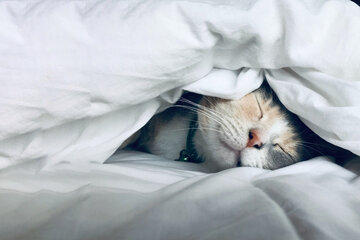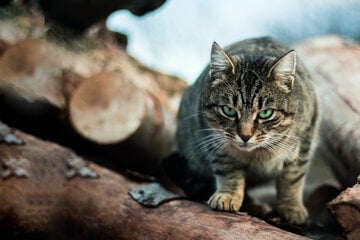Cat body language: How to read it and what does it mean?
There are few codes harder to crack than cat body language, yet it is arguably more important than it is for humans. Let's take a look at how to read a cat's body language and how to make sense of its behavior.
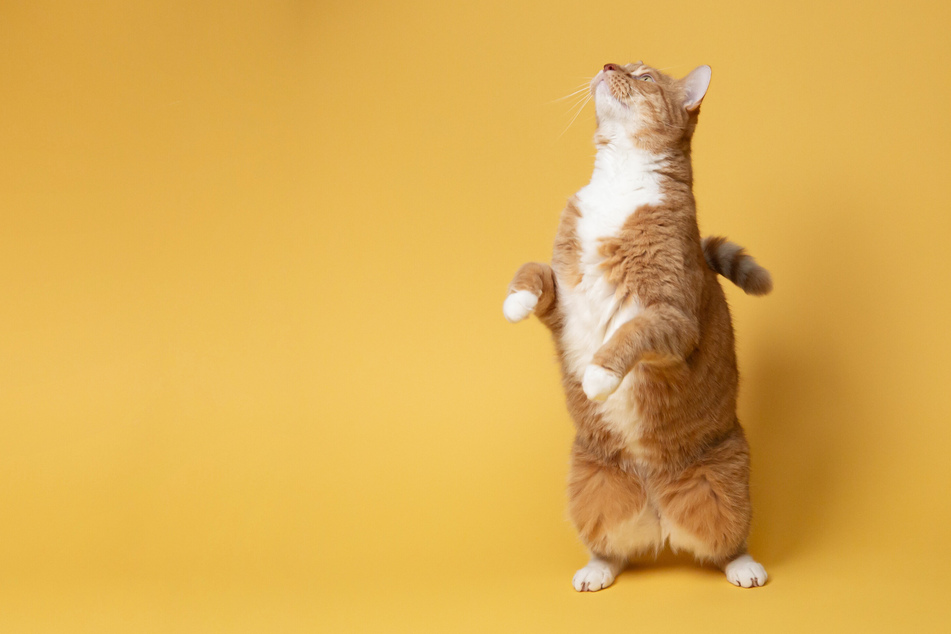
Cats are loving, playful, and fun creatures that can also be angry, grumpy, and violent. Coupled with the fact that kitties cannot speak to communicate, these factors make the reality of cat body language even more important.
So, what does your cat mean when it rubs against you, and what's with its ear flick?
In this cat guide, TAG24 will dive into how to read cat body language. Is your cat angry at you or happy to see you? How can you tell when it's hungry or scared? What communicated what? Let's dive in!
How to read cat body language
When it comes to the way cats move, every little quirk has some kind of meaning. The reality is that cats have many different stories to tell and messages to transmit, but they can't communicate them verbally.
It's all rather complicated, though, so let's narrow all of this down and start by establishing the basics.
Here are the four main cat body language indicators:
- Eyes: Blinking (slow blinks indicate comfort and trust), pupil dilations (dilated indicates anger, fear, or stimulation).
- Ears: Flicking, direction, stiffness.
- Tail: Stiffness or floppiness, direction, swishing, and wagging.
- Body shape: Your cat will change its shape based on its mood and desires.
So what's the deal? It's time to take a look at each feature of a cat's body language in a little more detail. We will then dive into the cat body language chart and examine how they display certain emotions.
Cat eyes body language
Cats express a lot of emotions through their eyes. If their pupils are wide and dilated, and they are holding them large and open, then they are feeling a little wild. This craziness could be overstimulation, a feeling of playfulness, or a need to hunt. It could also be anger - something that can end up being rather dangerous for a cat's human companions.
On the flip side, a cat whose eyes are relatively slim, droopy, and not dilated is less likely to be feeling restless, aggressive, moody, or angry. Indeed, a cat's eyes can also indicate love and respect, especially if they are willing to be a little bit sleepy around you or are trying to get pats while keeping their eyes narrow and warm.
Cat ears body language
When a cat starts turning its ears towards you, perhaps you are being a bit annoying or making loud noises. In turn, if those ears start flicking (perhaps while you are patting your beloved kitty), it is likely to be because it is starting to get angry. When petting a cat, watch its ears.
The position of a cat's ears also indicates its mood. If they are pointed upwards and forwards, they're usually completely fine. If its ears are super high up, stiff, and flicking, it is getting annoyed or concerned. If they become flattened down and pointed backward, your cat is getting very, very angry, and you should back away as quickly as possible.

Cat tail body language
Flicking and wagging tails tell all sorts of things about a cat's mood and feelings. If a cat's tail is flicking restlessly and it is constantly slipping away from you, then it is probably a bit grumpy. In such a situation, it is a good idea to step away and leave your kitty to its own devices.
In the case that your cat's tail is flopping and flowing, perhaps stroking your legs, then it is happy and showing you affection. On the flip side, a straight, pointed, and sturdy tail suggests quite the opposite - angry, concerned, fearful, or simply annoyed. In other words: If your cat's tail is still and straight or flicking restlessly, stop petting it.
Cat body shape language
Cats may come in many different shapes and sizes, but they will always show you their mood via the way that they sit or hold themselves. If your cat is standing with its back arched upwards and its fur standing on end, it is likely to be very angry. Similar indications of anger include a downward slope and a pulling away from you, as well as hissing and growling.
Meanwhile, a loose and chilled-out kitty whose body is relaxed and flowing is likely to be happy. Safe and secure cats will often roll around and expose their bellies to you, but don't always take this as an invitation to touch their stomach. This position is the "Venus cat-trap" and may result in some unwanted scratches.
Understanding the cat body language chart
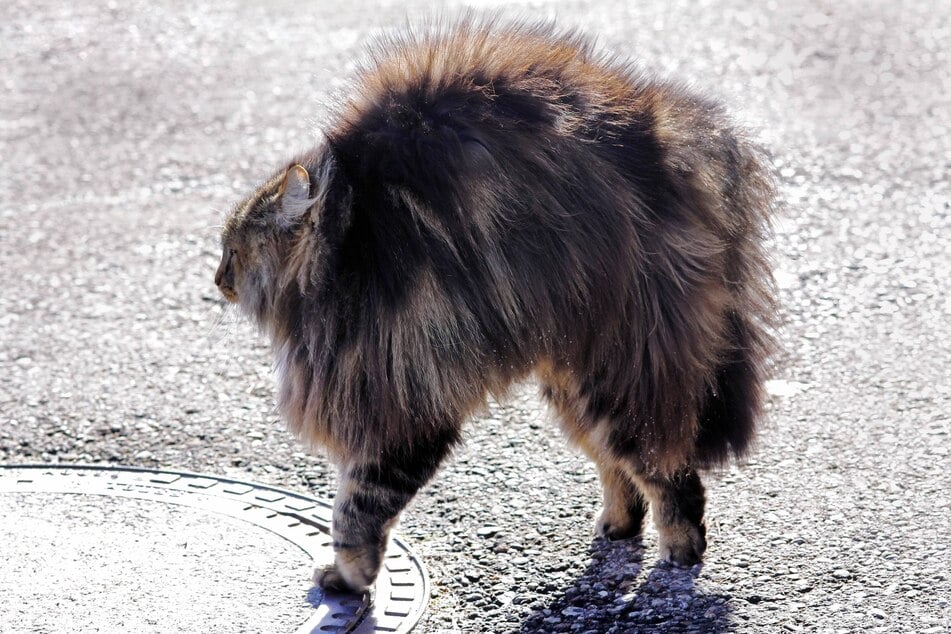
The cat body language chart is a visual representation of the many poses and habits cats use to express their feelings. It's pretty easy to interpret, and there are thousands out there available on the wild and wacky internet. A few great examples of cat body language charts include those produced by Pet Helpful and the selection created by Tuft and Paw.
To use a cat body language chart, you simply need to compare your cat's current behaviors and habits with the pictures displayed in the chart to diagnose the mood and temperament of your strangely-behaving kitty.
Sick cat body language
Sick cats will look particularly subdued, often keeping low and trying to keep out of sight. They generally try to keep themselves as small and non-intimidating as possible, as they feel weak and like they can't defend themselves. Particularly sick kitties will keep their tail floppy or even between their legs.
If your cat is showing signs of sickness or is stumbling around as if in a daze, you must take it to the veterinarian as soon as possible. Cats don't know that they are sick and don't understand the concept of illness - as a result, some cats will get quite aggressive and angry when they experience symptoms of sickness.
Scared and fearful cat body language
When a cat gets scared or fearful, it will often become very loose and try to stay as unseen as possible, hiding and staying small. They won't lie down but will remain in their iconic ball position as much as possible or might slide underneath the furniture to get away from the perceived threat.
The symptoms of a scared cat are actually quite similar to those of a sick cat, as when a cat gets sick, it will get scared as well. In such a situation, cats are known to keep away and, when especially frightened, may run away from home and not return for several days. As a result, if a situation is coming up where your cat might get scared (for example, if you're moving with a cat), it's best to keep it in a box or at least in a contained and inescapable space.
Aggressive cat body language
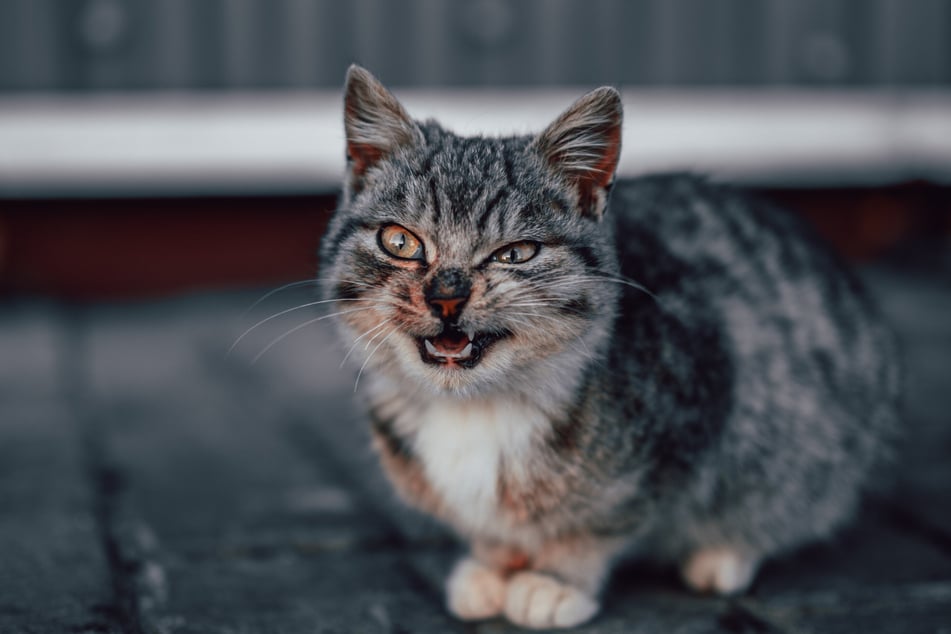
Angry cats are often referred to as balls of spiked fluff, as they will get extremely rigid. When feeling aggressive, their fur will stand on end, their tail will become straight, their ears will be pointed, and their eyes will be diluted. If you are witnessing such behavior directed at you, it's time to back away.
In situations where your cat feels extremely threatened and enraged, it will try to make itself look as big as it can. This "spikiness" will extend to bared fangs, claws that have been made clearly visible, and facial expressions that are set to strike fear into many a mouse.
Happy and playful cat body language
Take all the lessons we've taught you about angry and stressed-out cats, reverse these behaviors, and you will have the body language of a happy and playful kitty. Happy cats are loose, floppy, like physical contact, and will constantly seek your attention by sticking around, sliding against you, and meowing.
If your cat has droopy eyes or big wide ones with pupils that are not dilated, if their ears are casual and their tails are floppy, then they are likely to be happy and will be more than glad to accept your pats. Just beware of any mood changes by watching for body language signs in their tails and ears - cats can change their mood at the drop of a hat!
Cat body language is the key to understanding their behavior
Why does it flick its ears when I do that? Why does my cat keep rolling over and showing me its stomach? If you have ever wondered what is going through your kitty's mind and what those little quirks in its movement are all about, then understanding cat body language is your key and solution.
Cats show clear signs of anger, fear, happiness, and love through their body language. Of course, they'll talk to you from time to time, but if you understand their emotions through their movement, the better your relationship will be.
Cover photo: Unsplash/Kabo
